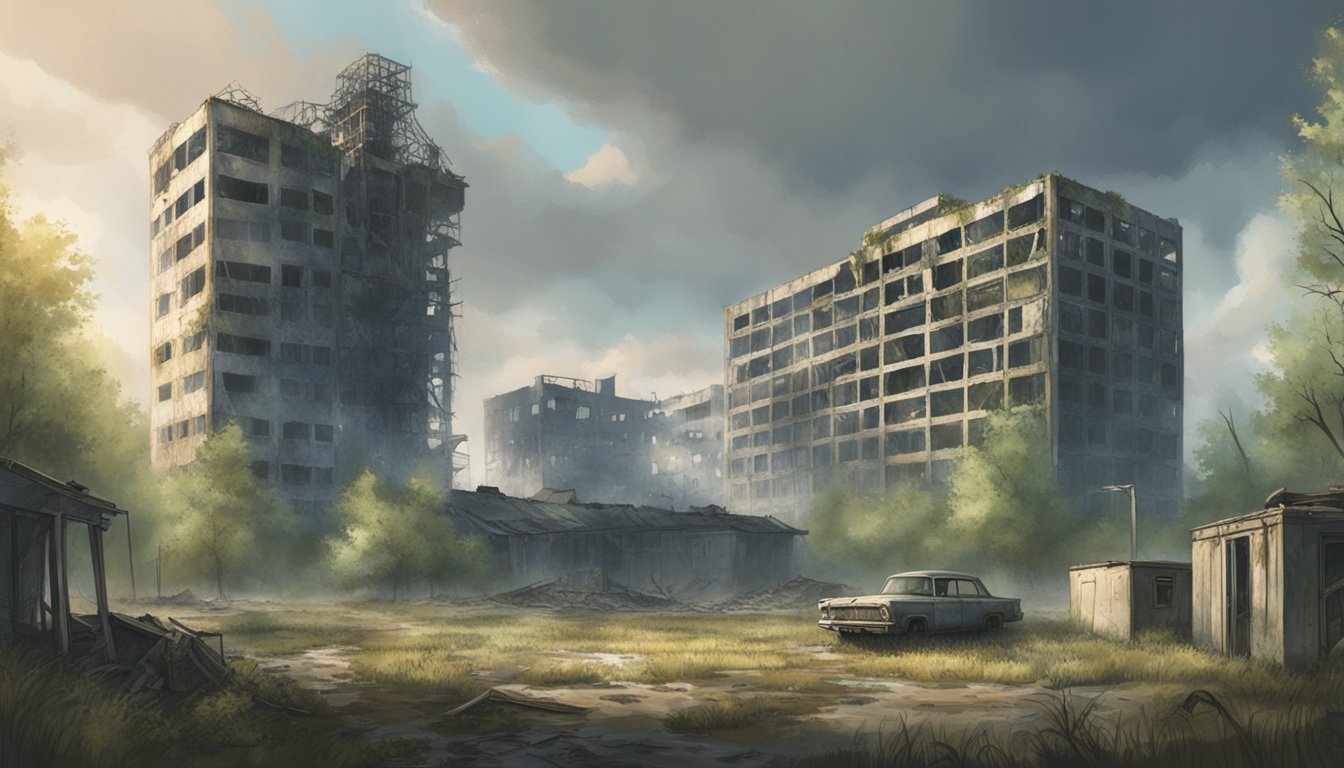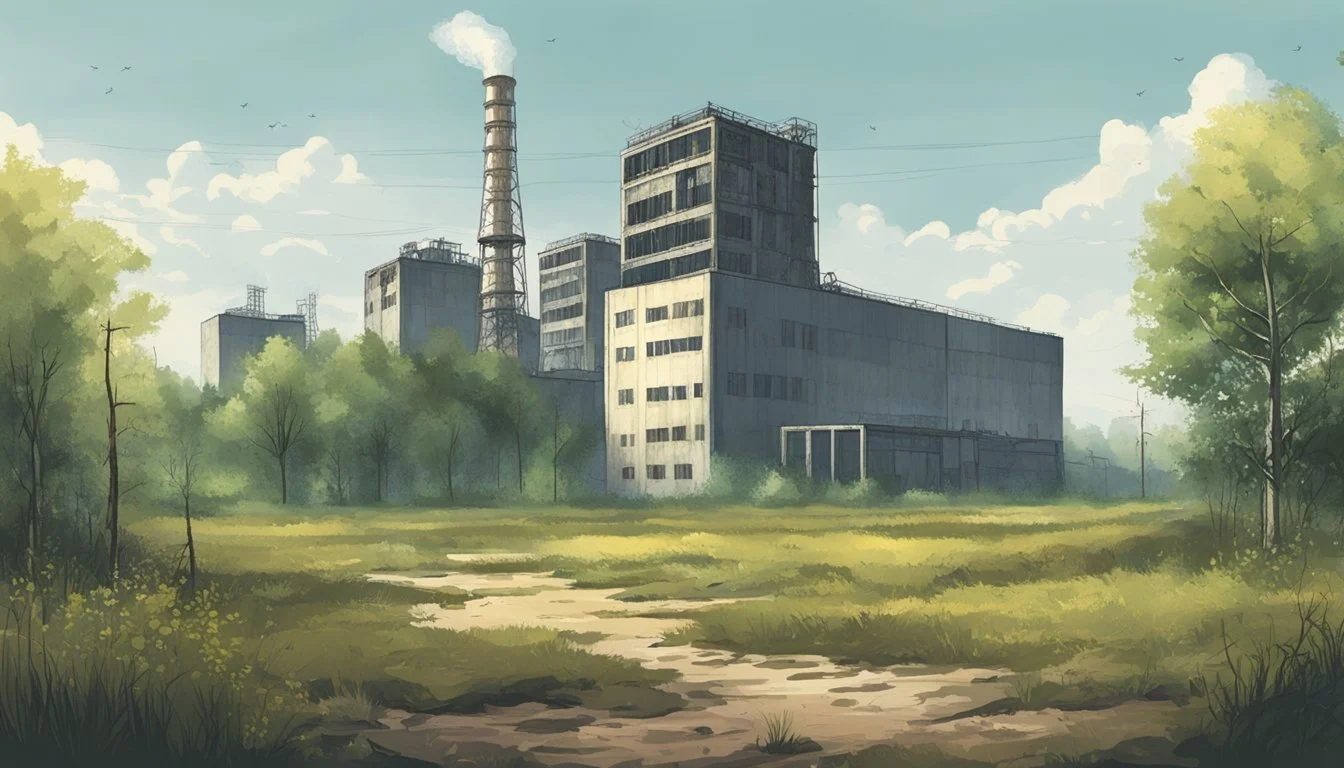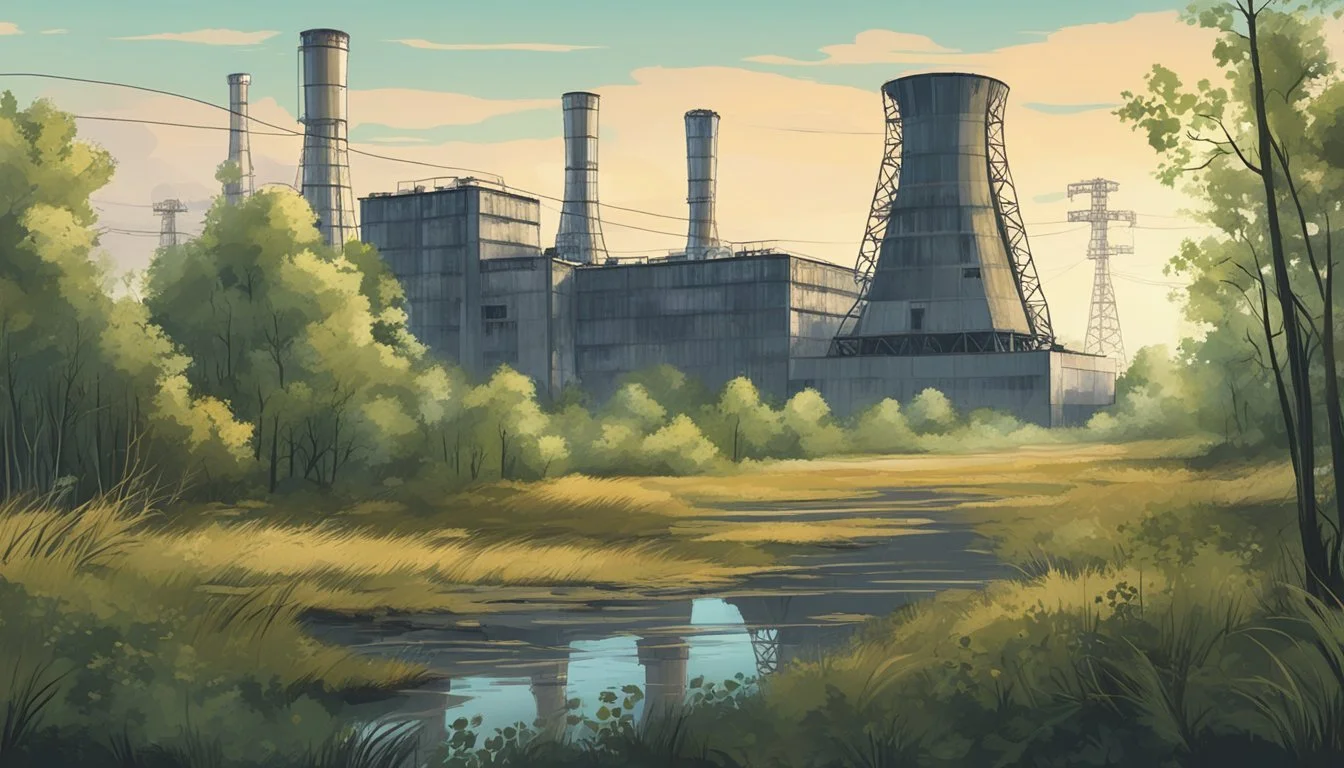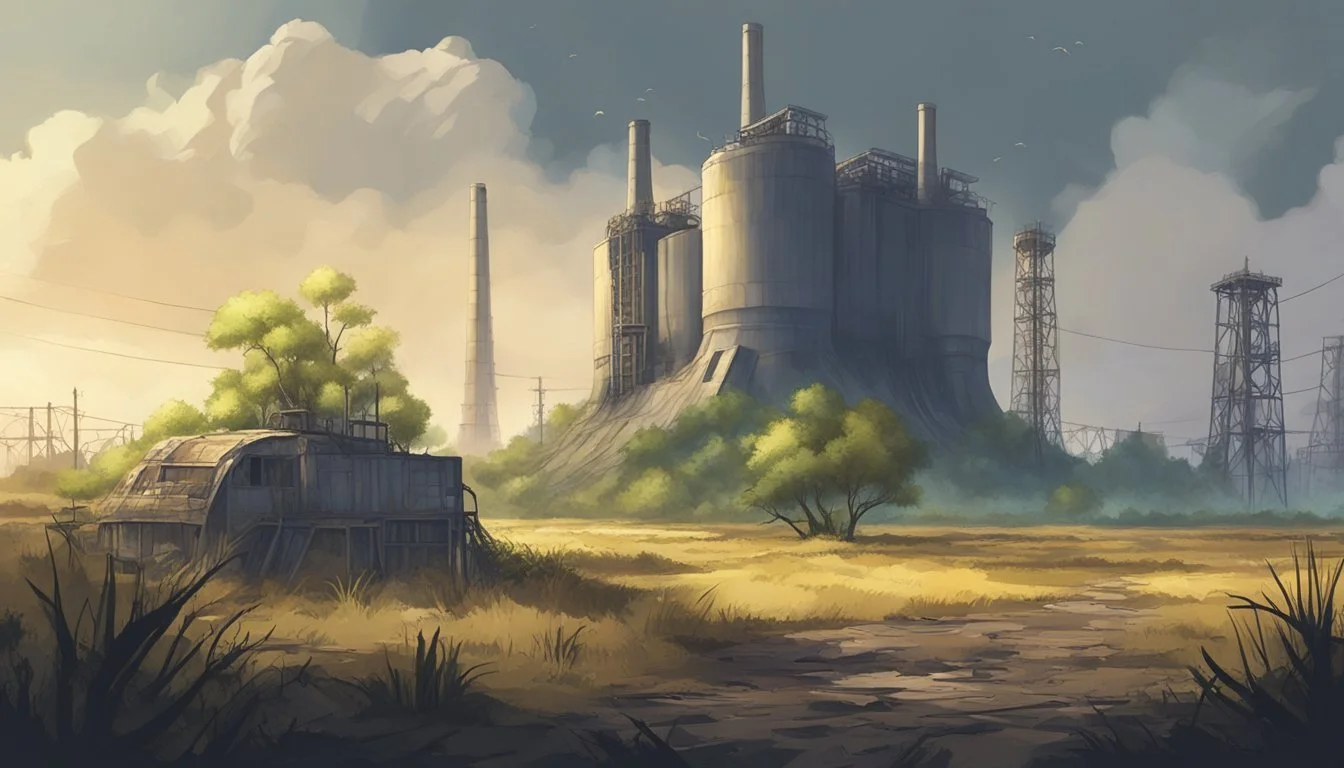The Actual Chernobyl: The Disaster and Its Aftermath
Unveiling the True Impact of Nuclear Catastrophe
The Chernobyl disaster of April 26, 1986 stands as the worst nuclear accident in history. A routine safety test at the Chernobyl Nuclear Power Plant in Ukraine went catastrophically wrong, leading to an explosion and fire that released massive amounts of radioactive material into the environment.
The accident resulted in the release of 400 times more radiation than the atomic bomb dropped on Hiroshima during World War II. The immediate aftermath saw 31 deaths directly attributed to the explosion and acute radiation sickness. In the years that followed, the disaster's impact continued to unfold, affecting millions of people and contaminating vast areas of land.
The cleanup efforts were immense and dangerous. Hundreds of thousands of workers, known as liquidators, were involved in containing the radioactive material and mitigating the disaster's effects. These brave individuals faced significant health risks, with many suffering long-term consequences. The Chernobyl disaster reshaped nuclear safety protocols worldwide and left an indelible mark on the surrounding region, creating an exclusion zone that remains largely uninhabited to this day.
The Prelude to the Disaster
The Chernobyl disaster was preceded by a combination of design flaws, safety concerns, and operational missteps. These factors set the stage for the catastrophic event that would unfold on April 26, 1986.
Design Flaws and Safety Concerns
The Chernobyl Nuclear Power Plant utilized the RBMK-1000 reactor design, which had inherent flaws. This reactor type lacked a containment structure, making it vulnerable to radioactive releases. The design also suffered from a positive void coefficient, causing the reactor to become more reactive as steam bubbles formed.
Safety systems were inadequate. The emergency core cooling system could be manually disabled, and the control rods had a dangerous graphite tip design. These issues were compounded by cost-cutting measures during construction, which compromised the quality of materials and workmanship.
Soviet authorities downplayed risks, with one official claiming the odds of a meltdown were "one in 10,000 years" just months before the accident.
Operational Missteps
In the lead-up to the disaster, a series of operational errors occurred. Plant personnel were preparing to conduct a safety test on Reactor No. 4, which had been delayed and rushed to completion before a scheduled maintenance shutdown.
The test required disabling several safety systems, including the emergency core cooling system. Operators also reduced the reactor's power to dangerously low levels, leading to xenon poisoning and instability.
Communication breakdowns between shifts and pressure to complete the test led to violations of safety protocols. Inexperienced staff made critical decisions without fully understanding the risks involved.
These operational missteps, combined with the reactor's design flaws, created a perfect storm of conditions that would ultimately trigger the catastrophic explosion and meltdown.
April 26, 1986: The Night of the Disaster
The Chernobyl disaster unfolded rapidly during the early hours of April 26, 1986. A safety test gone wrong led to a catastrophic reactor explosion, triggering an unprecedented nuclear emergency.
Timeline of Events
At 1:23:04 AM, operators began a safety test on Reactor No. 4. By 1:23:40 AM, an operator pressed the emergency shutdown button, but the control rods jammed. At 1:23:58 AM, the first explosion occurred, followed quickly by a second blast.
The explosions blew off the reactor's 1,000-ton concrete lid and released radioactive material into the atmosphere. Within minutes, fires broke out on the roof of the reactor building and the adjacent structure.
Two workers died immediately from the explosions. Firefighters arrived on the scene at 1:28 AM, unaware of the radiation danger they faced.
Reactor Explosion and Immediate Response
The initial response focused on containing the fires and preventing them from spreading to other reactor units. Firefighters worked tirelessly, using water and foam to combat the blaze.
Plant workers and emergency responders received lethal doses of radiation as they battled the disaster. Many suffered acute radiation sickness in the following days and weeks.
Local authorities were slow to grasp the full magnitude of the disaster. Evacuation of nearby Pripyat did not begin until 36 hours after the explosion, leaving residents exposed to dangerous levels of radiation.
The Soviet government initially attempted to downplay the severity of the accident, delaying critical information sharing with neighboring countries and the international community.
The International Response
The Chernobyl disaster triggered a global reaction, prompting both immediate crisis management efforts and long-term international cooperation on nuclear safety.
Soviet Union's Crisis Management
The Soviet government initially attempted to downplay the severity of the Chernobyl accident. They delayed public announcements and withheld critical information from their own citizens and the international community.
As radiation levels rose across Europe, pressure mounted for transparency. The Soviet leadership eventually acknowledged the full scope of the disaster. They mobilized resources for containment and evacuation efforts.
Thousands of workers, known as "liquidators," were deployed to the site. These individuals risked their lives to clean up radioactive debris and construct a concrete sarcophagus around the damaged reactor.
Global Aid and Involvement
The international community responded with offers of assistance and expertise. Medical teams from various countries provided treatment for radiation exposure victims.
The United Nations and World Health Organization coordinated global efforts to assess the disaster's impact. They conducted studies on health effects and environmental contamination.
The accident spurred the development of new nuclear safety protocols. The International Atomic Energy Agency (IAEA) established the Convention on Nuclear Safety in 1994. This treaty aimed to improve safety standards at nuclear power plants worldwide.
Many countries reassessed their nuclear energy policies. Some halted or scaled back nuclear programs, while others enhanced safety measures.
Human Impact
The Chernobyl disaster had profound and lasting effects on human lives. Immediate casualties, long-term health consequences, and the displacement of thousands of people reshaped communities and individual fates.
Casualties and Health Effects
The initial death toll from the Chernobyl accident was relatively low. 31 people died as a direct result of the explosion and acute radiation poisoning. However, the long-term health impacts have been far more extensive.
Thousands of children in the affected regions developed thyroid cancer, largely due to exposure to radioactive iodine. The incidence of leukemia and other cancers increased among cleanup workers and residents of contaminated areas.
Psychological trauma and stress-related illnesses affected many survivors. The fear of radiation exposure led to higher rates of anxiety, depression, and substance abuse in affected populations.
Evacuation and Resettlement
The Chernobyl disaster prompted one of the largest peacetime evacuations in history. Within 36 hours of the accident, authorities evacuated nearly 50,000 people from Pripyat, the nearest town.
Over the following months, the evacuation zone expanded. Approximately 116,000 people were relocated from the 30-kilometer exclusion zone surrounding the plant.
Many evacuees faced significant challenges:
Loss of homes and livelihoods
Separation from communities
Stigma associated with being from a contaminated area
Difficulties adapting to new environments
Some residents refused to leave or later returned to their homes in contaminated areas, despite the health risks. This phenomenon of "self-settlers" created ongoing public health concerns.
Environmental Consequences
The Chernobyl disaster caused widespread contamination and long-lasting impacts on the surrounding ecosystems. Radioactive fallout affected large areas of land and water, altering habitats and wildlife populations for decades.
Radiation Contamination
Radioactive material from the Chernobyl explosion spread over vast territories. An estimated 13-30% of the reactor's nuclear fuel was released into the atmosphere. The contamination covered parts of Ukraine, Belarus, and Russia, with traces detected across Europe.
The most affected area, known as the Exclusion Zone, spans approximately 2,600 square kilometers. This region remains heavily contaminated and largely uninhabited. Cesium-137, strontium-90, and plutonium isotopes persist in the soil and water.
Radiation levels have decreased over time due to natural decay and decontamination efforts. However, some areas still exhibit elevated radioactivity, posing ongoing environmental challenges.
Ecosystem and Wildlife Effects
The Chernobyl accident significantly impacted local flora and fauna. Initial radiation exposure caused widespread die-offs of pine trees, creating the "Red Forest" near the reactor site.
Wildlife populations initially declined due to acute radiation poisoning. Surprisingly, many species have since rebounded in the absence of human activity. The Exclusion Zone now hosts diverse wildlife, including wolves, deer, and rare Przewalski's horses.
Some animals show genetic mutations and higher radiation levels in their tissues. Studies have found increased cataracts in birds and smaller brains in some rodents. However, the overall ecosystem has demonstrated remarkable resilience.
Plant life has also adapted, with some species showing increased resistance to radiation. Fungi in the area have even developed the ability to use radiation as an energy source.
Socio-Political Ramifications
The Chernobyl disaster had profound impacts on government trust and nuclear energy policies worldwide. It exposed weaknesses in Soviet leadership and reshaped public attitudes towards nuclear power.
Government Transparency and Public Trust
The Soviet government's initial secrecy about the Chernobyl accident severely damaged public trust. Officials delayed evacuation and withheld critical information from citizens for days. This lack of transparency fueled widespread anger and skepticism towards authorities.
As news of the disaster spread, it undermined confidence in the Soviet system both domestically and internationally. Citizens began questioning the competence and truthfulness of their leaders.
The incident contributed to growing dissatisfaction with the Communist regime. It became a catalyst for glasnost (openness) policies under Gorbachev, as the government was forced to be more forthcoming about its failures.
Influence on Nuclear Policies
Chernobyl prompted a global reassessment of nuclear energy safety and regulation. Many countries halted or slowed nuclear power plant construction. Some, like Italy, voted to phase out nuclear energy entirely.
Safety protocols for existing plants were strengthened worldwide. International cooperation on nuclear safety increased, with new agreements and oversight mechanisms put in place.
Public opposition to nuclear power grew significantly in many nations. Anti-nuclear movements gained momentum, influencing energy policies for decades to come.
The disaster also highlighted the cross-border nature of nuclear risks, leading to improved international notification systems for nuclear incidents.
Economic Implications
The Chernobyl disaster had profound economic consequences, both immediate and long-lasting. Enormous financial resources were diverted to deal with the aftermath, straining national budgets and impacting economic growth for decades.
Cost of the Disaster
The immediate costs of the Chernobyl accident were staggering. Emergency response efforts, evacuation of nearby populations, and initial cleanup operations required massive funding.
Soviet scientists estimated that reactor 4 contained about 190 metric tons of uranium dioxide fuel and fission products. Approximately 13-30% of this material escaped into the environment, necessitating extensive decontamination efforts.
The permanent relocation of affected families incurred significant expenses. Estimates suggest relocating 10,000 families cost around $2 billion, with an additional $500 million for temporary housing.
Long-term Economic Strain
The economic impact of Chernobyl persisted long after the initial disaster. Belarus, one of the most affected countries, spent 22.3% of its national budget on Chernobyl-related costs in 1991.
This percentage gradually decreased to 6.1% by 2002, but remained a substantial burden. Between 1991 and 2003, Belarus spent over $13 billion on Chernobyl aftermath management.
Ukraine faced similar challenges. The ongoing costs of containment, healthcare for affected populations, and lost productivity from contaminated lands created an unsustainable fiscal burden for both nations.
These expenditures diverted resources from other crucial areas of economic development, hindering growth and prosperity in the affected regions for decades.
Ongoing Legacy and Memory
The Chernobyl disaster continues to shape policies, scientific research, and cultural perceptions decades later. Its impact remains visible in the exclusion zone and reverberates through literature, film, and public consciousness.
Chernobyl Exclusion Zone
The 2,600 km² Exclusion Zone surrounds the former nuclear plant site. Access is restricted, with special permits required for entry. Wildlife has flourished in the absence of human activity, creating a unique ecosystem. Scientists study the zone to understand long-term effects of radiation on flora and fauna.
Tourism has grown, with guided tours offering glimpses into the abandoned city of Pripyat. Visitors can see the iconic ferris wheel, empty buildings, and the New Safe Confinement structure covering the damaged reactor.
Ongoing decontamination efforts continue. The zone remains hazardous, with some areas expected to be uninhabitable for thousands of years.
Cultural and Historical Significance
Chernobyl has become a powerful symbol of nuclear risks and environmental disasters. The event inspired numerous books, documentaries, and films, including the critically acclaimed HBO miniseries "Chernobyl" (2019).
The disaster sparked global debates on nuclear energy safety and regulation. It influenced energy policies in many countries, leading some to phase out or reconsider nuclear power programs.
Chernobyl memorials exist worldwide, honoring victims and first responders. The UN designated April 26 as International Chernobyl Disaster Remembrance Day.
The catastrophe's legacy extends to medical research, driving studies on radiation effects and improving treatment for exposure victims.
Advancements in Nuclear Safety
The Chernobyl disaster spurred significant improvements in nuclear safety protocols and technology worldwide. New measures were implemented to prevent similar accidents, while innovative structures were developed to contain existing risks.
Post-Chernobyl Safety Measures
Nuclear power plants underwent major upgrades following the Chernobyl incident. Safety systems were enhanced, and operational procedures were revised. Training programs for plant personnel became more rigorous, emphasizing safety culture and emergency preparedness.
The International Atomic Energy Agency (IAEA) established new safety standards and guidelines for nuclear facilities. Regular inspections and peer reviews became mandatory for nuclear power plants globally.
Many countries implemented stricter regulations and oversight of nuclear operations. This included improved emergency response plans and increased transparency in reporting safety incidents.
The New Safe Confinement Structure
In 2016, a massive steel arch was constructed over the damaged Chernobyl reactor. This New Safe Confinement (NSC) replaced the original concrete sarcophagus built shortly after the accident.
The NSC is designed to contain radioactive material for at least 100 years. It measures 108 meters high, 162 meters long, and weighs over 36,000 tons.
Key features of the NSC include:
A sophisticated ventilation system
Corrosion-resistant cladding
Remote-controlled cranes for future dismantling work
This structure not only prevents further environmental contamination but also allows for the eventual dismantling of the reactor remains.
Chernobyl in the 21st Century
The Chernobyl site remains a focus of ongoing containment efforts, scientific study, and public interest. Significant developments have occurred in recent years to secure the area and advance our understanding of long-term radiation effects.
Current State of the Site
The New Safe Confinement, a massive steel structure, was completed in 2016 to encase the damaged reactor. This 108-meter tall arch is designed to prevent further radioactive contamination for at least 100 years.
Wildlife has thrived in the Exclusion Zone, with species like wolves, deer, and horses inhabiting the area. Some villages within the zone have been resettled, though population numbers remain low.
Tourism to Chernobyl has increased, with guided tours offering visitors a glimpse into the abandoned city of Pripyat and the plant itself.
Scientific Research and Learning
Chernobyl serves as a unique laboratory for studying the long-term effects of radiation on ecosystems. Scientists continue to monitor plant and animal populations, soil contamination, and genetic mutations.
Research focuses on radiation-resistant organisms found in the zone, potentially leading to breakthroughs in cancer treatment and radiation protection.
The site also provides valuable data for improving nuclear safety protocols and disaster response strategies worldwide.
International collaboration has increased, with research teams from various countries working together to unlock Chernobyl's scientific potential.







